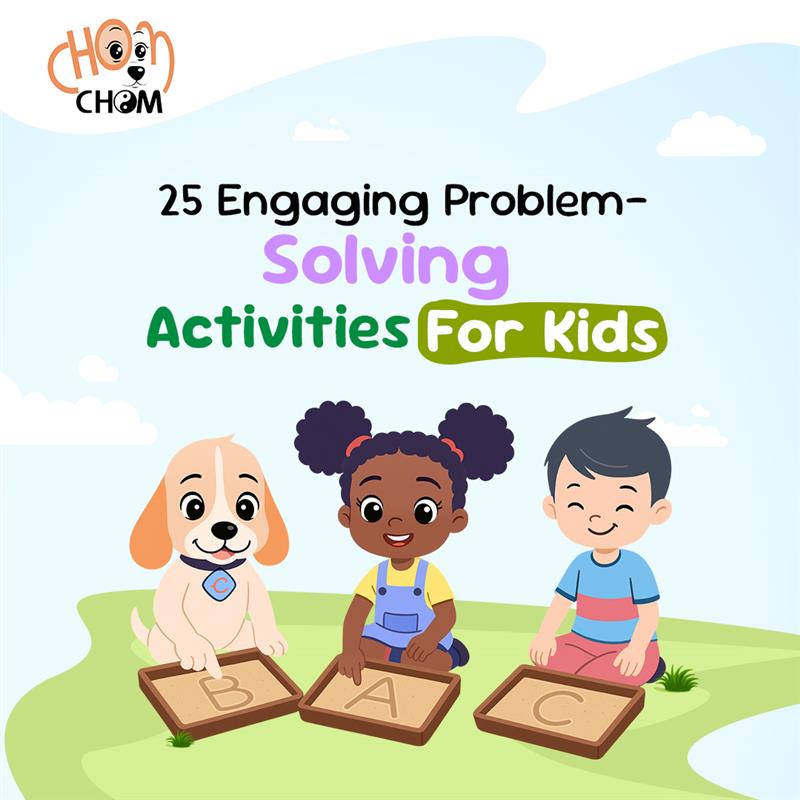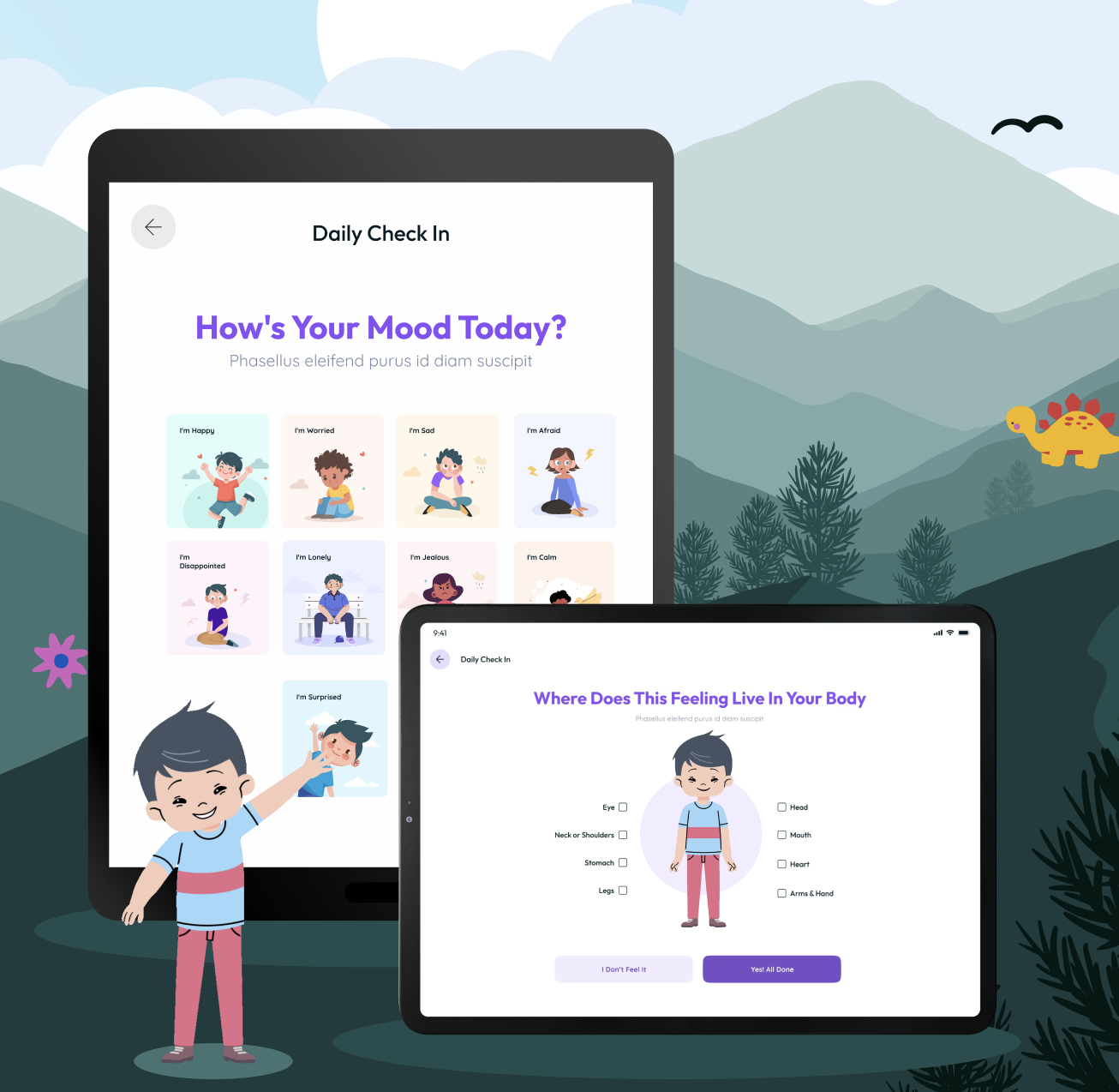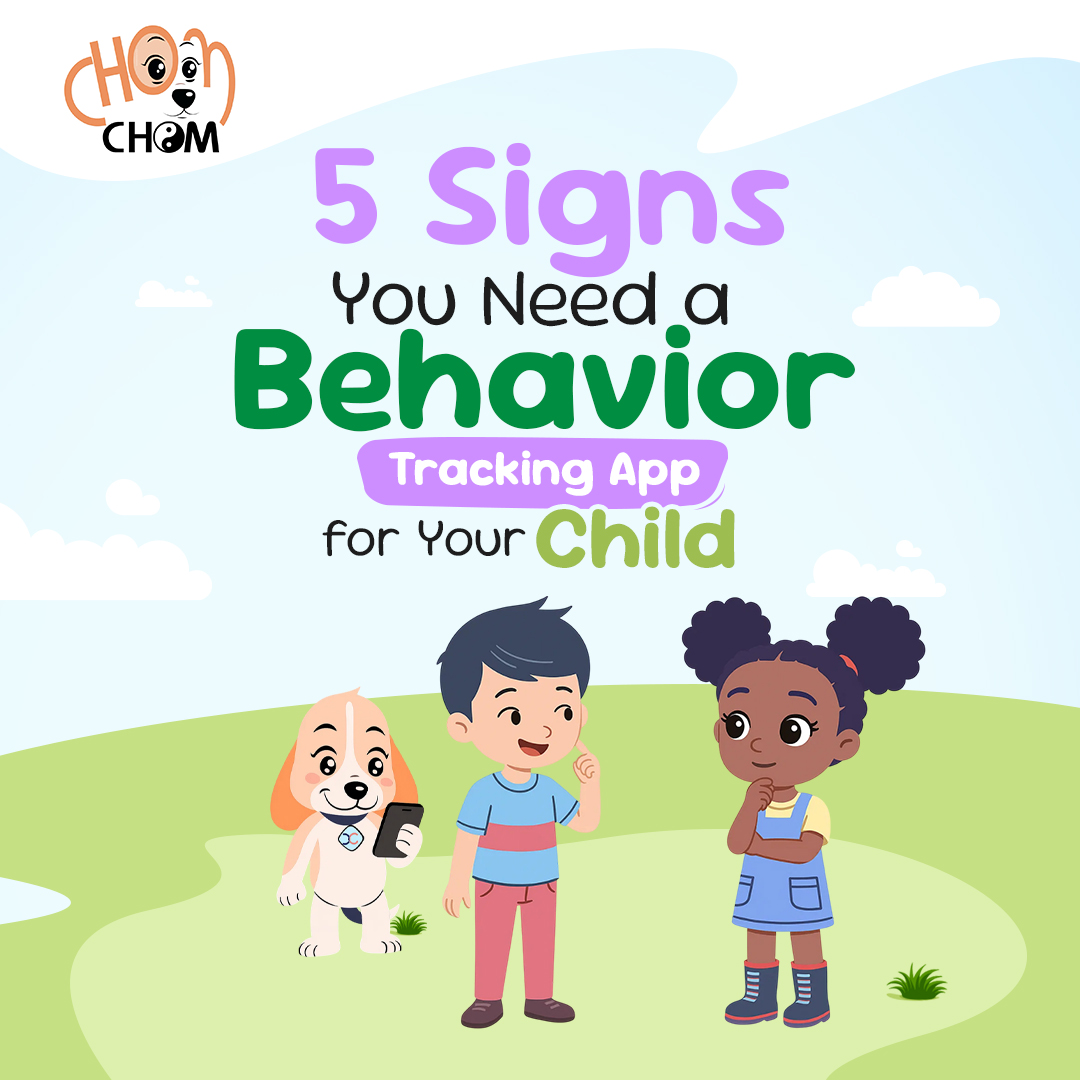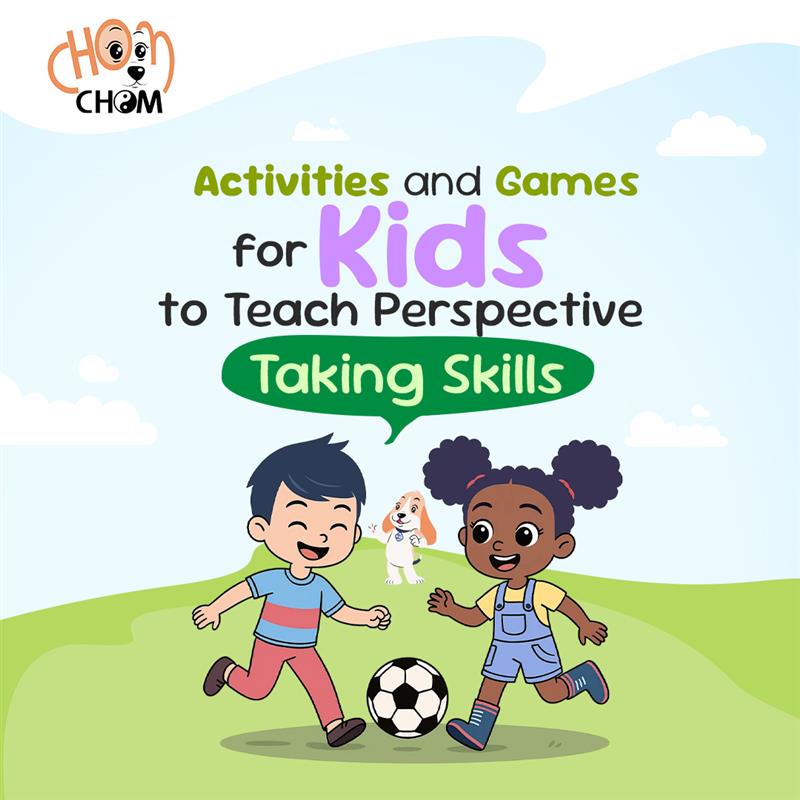
How do you make your kid a problem solver? Are there ways to improve their attention skills? How to help them become more confident in difficult scenarios? Well, we have brought the perfect read for you.
Problem-solving is one of the most vital life skills children can develop. From an early age, kids face challenges, such as figuring out how to build a taller block tower, working through a tricky puzzle, or resolving a disagreement with a friend.
These moments aren’t just play; they’re opportunities to strengthen critical thinking, creativity, and resilience.
As neurodiverse children learn to approach problems with curiosity and confidence, they become better prepared for school, relationships, and everyday life. That’s where problem-solving activities come in.
Fun, engaging, and often disguised as games, these activities give kids the chance to explore different solutions, test their ideas, and learn from mistakes in a safe and encouraging environment.
In this detailed read, we have put together more than twenty exciting problem-solving activities that spark imagination, build teamwork, and encourage independent thinking; all while keeping kids entertained.
Whether at home or in the classroom, these activities will inspire your child to think outside the box and enjoy the process of finding solutions.
Problem-Solving Activities for Kids – At a Glance
In this comprehensive piece, we will –
- Explore why problem-solving skills are crucial for neurodiverse kids and how they help in academics, creativity, and real-life situations.
- Discover 25 engaging activities designed to boost children’s critical thinking, teamwork, and decision-making.
- Learn activities that include fun puzzles, brain teasers, building challenges, role-play scenarios, outdoor games, and group tasks.
- Discover how these activities inspire kids to think creatively and devise innovative solutions.
- See how problem-solving games also help children build patience, resilience, and confidence.
- Find practical ideas that can be used both at home and in the classroom.
- Get tips on making problem-solving activities more interactive, enjoyable, and age-appropriate.
- Understand how parents and teachers can support kids through challenges without giving away the answers.
Why Learning Problem-Solving Skills is Crucial for Neurodiverse Children?
Problem-solving is more than an academic skill. It’s a life skill that helps children navigate the world with confidence.
For neurodiverse kids, building these abilities is especially vital as it supports their unique strengths while preparing them for everyday challenges.
Here’s why problem-solving matters so much –
- Encourages independence – Helps children rely on their thinking instead of waiting for guidance.
- Builds resilience – Teaches kids to cope with mistakes, setbacks, and unexpected changes.
- Supports social growth – Improves communication and teamwork by encouraging kids to find solutions with peers.
- Boosts confidence – Every small success shows children that they are capable of overcoming challenges.
- Enhances academic skills – Strengthens logical thinking, organization, and creativity, which are helpful in the classroom.
- Prepares for real-life situations – Gives kids tools to solve everyday problems calmly and effectively.
By practicing problem-solving in the early years, neurodiverse children learn to approach challenges with creativity, patience, and confidence.
Let’s begin.
25-Problem Solving Activities for Kids with Neurodiversity
Every child learns and grows differently, and neurodiverse kids often shine when given creative, engaging ways to explore problem-solving. These activities are not just about finding answers; they encourage children to think, test, and try again in a safe, fun environment.
From puzzles to role-play, each activity provides opportunities to strengthen critical thinking, resilience, and independence.
Below are 25 simple yet powerful problem-solving activities for kids’ executive functioning. They help neurodiverse children build essential problem-solving skills.
1. Jigsaw Puzzles
Jigsaw puzzles are a classic activity that helps children sharpen their problem-solving abilities in a calm and structured way.
For neurodiverse kids, puzzles provide a hands-on opportunity to develop visual perception, attention to detail, and patience. As they work to fit pieces together, children learn to analyze shapes, colors, and patterns while testing different solutions.
This trial-and-error process teaches resilience and persistence, encouraging them not to give up when the solution isn’t immediate.
Completing a puzzle also gives kids a sense of accomplishment, boosting confidence. Puzzles can be adapted to different ability levels; starting with large, simple pieces and gradually moving to more complex designs; making them an inclusive and flexible activity.
2. Building with LEGO or Blocks
LEGO and block-building activities are fantastic for encouraging creativity and structured problem-solving at the same time.
Neurodiverse kids benefit from the tactile nature of building. It engages their fine motor skills while stimulating imagination.
When constructing towers, houses, or imaginative designs, children encounter problems like balancing, stability, and design limitations. This gives them the chance to think critically, test solutions, and adjust strategies.
Building also promotes spatial awareness, planning, and sequencing skills. For children who thrive on structure, following step-by-step instructions from LEGO sets can strengthen focus and organization.
3. Treasure Hunts with Clues
Treasure hunts are exciting, interactive activities that make problem-solving an adventure. For neurodiverse kids, following clues and searching for hidden objects offers a balance of fun, movement, and critical thinking.
Clues encourage children to practice sequencing, comprehension, and memory skills while making connections between steps. Each stage of the hunt presents a mini-problem to solve, whether it’s deciphering a riddle, following a direction, or spotting a hidden object. This encourages perseverance and flexible thinking.
Treasure hunts also help children work on social problem-solving when done in groups, teaching teamwork, communication, and sharing success.
4. Matching Games
Matching games, like using cards, pictures, or objects, or digital matching games like Color Catch Adventure, are simple yet highly effective tools for teaching problem-solving to neurodiverse kids.
These games develop memory, focus, and logical reasoning by requiring children to identify relationships between items.
As kids try to find pairs or matches, they must use attention to detail, observation skills, and recall strategies. The process of trial and error teaches them to make connections and adapt their approach when something doesn’t work.
Matching activities can be adjusted for different needs, such as using visual cards, sensory objects, or sound-based matches, making them inclusive and supportive of different learning styles.
5. Story Sequencing Cards
Story sequencing cards are an excellent way to help neurodiverse children understand order, logic, and cause-and-effect relationships.
With a set of illustrated cards, kids are asked to arrange events in the correct sequence to form a story. This activity requires problem-solving skills as children analyze details, predict outcomes, and decide the proper order.
Such a game supports comprehension and language development by encouraging kids to explain the sequence in their own words. For neurodiverse learners who may struggle with transitions or abstract concepts, sequencing provides a concrete, visual way to practice organization and logical reasoning.
It also builds patience and focus, since kids must carefully observe details and test different arrangements until the story makes sense.
6. Board Games
Board games such as Snakes & Ladders or Candy Land provide a fun and structured way for neurodiverse kids to develop problem-solving skills.
They introduce concepts like chance, rules, and consequences in an engaging format. Children learn to make decisions based on dice rolls, think ahead about possible outcomes, and cope with unexpected setbacks like sliding down a snake.
A board game strengthens critical thinking at home. It helps build resilience and flexibility, showing kids that problems can be solved even when things don’t go as planned.
Board games also promote turn-taking, patience, and social interaction, making them valuable for group play. The clear rules and visual structure of these games provide predictability, which is especially helpful for neurodiverse children who thrive on routine.
7. Tangram Puzzles
Tangram puzzles involve arranging geometric pieces to form specific shapes or patterns, making them excellent for developing spatial reasoning and creative problem-solving.
Neurodiverse kids benefit from the hands-on, visual nature of tangrams, as they require observation, trial and error, and persistence.
When trying to fit pieces together, children practice critical thinking, testing multiple possibilities until they discover the right combination. This activity helps improve patience, focus, and logical reasoning, while also fostering creativity when kids design their own figures.
Tangrams can be simplified or made more complex depending on ability levels, ensuring inclusivity.
8. Sorting and Categorizing Activities
Sorting and categorizing games, such as grouping items by color, shape, size, or type, help neurodiverse kids strengthen organization, attention to detail, and logical thinking.
The activity is beneficial for children who benefit from clear structures, as it provides a straightforward yet challenging problem-solving process.
Kids must analyze similarities and differences, make decisions about where objects belong, and adapt their strategies if something doesn’t fit.
Sorting also lays a foundation for mathematical thinking and scientific observation, as it mirrors real-life problem-solving tasks like classification and comparison.
9. Memory Card Game
The memory card game, where players flip over cards to find matching pairs, is a simple but powerful way to boost problem-solving in neurodiverse children. It develops short-term memory, concentration, and strategic thinking as kids must remember card positions and plan their next moves.
Each round provides immediate feedback; success builds confidence, while mismatches encourage kids to adjust their strategies. The trial-and-error approach helps children learn persistence and flexibility.
Memory games can be tailored to different needs, using pictures, numbers, words, or even sensory-based cards for added support. Group play introduces social problem-solving, while solo play offers a calm, independent challenge.
10. Pattern Recognition Games
Pattern recognition activities, such as completing sequences of colors, shapes, or numbers, help neurodiverse children strengthen their logical reasoning and predictive skills. These games teach kids how to identify rules, anticipate what comes next, and apply problem-solving strategies to continue the sequence.
Pattern games can range from simple color blocks for younger children to more complex number or symbol puzzles for older ones, allowing flexibility based on developmental level.
For neurodiverse learners, this activity promotes focus, structured thinking, and confidence in solving step-by-step problems. It also teaches adaptability when patterns become more challenging, encouraging perseverance.
11. Role-Play Scenarios
Role-play scenarios are a fantastic way for neurodiverse kids to practice problem-solving in real-life situations through imaginative play.
For example, children can act out scenarios like resolving a disagreement, ordering food at a restaurant, or helping a lost toy find its way home. It allows kids to think through social challenges, experiment with different solutions, and build confidence in handling everyday problems.
Role-play also improves communication, empathy, and perspective-taking, which are essential life skills. For children who may struggle with social situations, role-playing offers a safe, controlled space to practice and make mistakes without pressure.
12. Obstacle Courses
Obstacle courses, whether indoors with cushions and chairs or outdoors with playground equipment, help neurodiverse kids develop problem-solving through movement and planning.
As children navigate each obstacle, they must figure out strategies to climb, crawl, or balance successfully. It strengthens critical thinking, motor coordination, and adaptability, especially when obstacles are rearranged or new rules are added.
Obstacle courses can be made more structured by incorporating challenges such as “only hop on red tiles” or “carry a ball through the tunnel,” which encourages kids to think creatively and follow instructions.
Physical activities like this also provide sensory input, which can help children self-regulate while building confidence. They teach resilience and persistence by showing kids that challenges can be overcome step by step.
13. Spot-the-Difference Games
Spot-the-difference games challenge kids to observe two images and find subtle changes between them carefully. For neurodiverse children, this activity strengthens attention to detail, focus, and patience.
Problem-solving comes into play as kids systematically scan the images, compare elements, and decide where the differences lie. This process teaches perseverance, as some differences may be tricky to find and require careful re-checking.
You can try the ‘Mood Quest’ game, where a child must spot the difference between emotions. It engages multiple senses, like emotional abilities and hand-to-eye coordination. Furthermore, the game is specifically designed for children with ADHD, ASD, and PDA and helps calm their nerves, without being overtly stimulating.
14. Connect-the-Dots Puzzles
Connect-the-dots puzzles are easy challenges for kids, but they offer great problem-solving practice for neurodiverse kids.
By connecting dots in sequence, children strengthen skills like number recognition, sequencing, and following instructions. The activity develops fine motor skills, patience, and planning, as kids must carefully follow the order to reveal the final picture.
Problem-solving comes into play when children realize the importance of following the steps correctly to achieve the intended result.
If a mistake is made, they must adapt and adjust, teaching resilience and flexible thinking. The reward of seeing the completed picture builds motivation and confidence.
15. Maze Building
Maze activities, whether on paper or built with physical objects, are excellent for teaching trial-and-error problem-solving.
Neurodiverse kids navigating mazes learn how to plan, test different paths, and deal with setbacks when they hit dead ends.
It builds resilience and flexible thinking as children discover there are multiple ways to approach a problem.
Creating mazes themselves, using blocks, tape, or chalk, adds another layer of problem-solving, as they must design routes that are challenging and solvable.
Mazes, as group problem-solving activities for kids, also enhance spatial reasoning and logical thinking, helping kids break down complex tasks into smaller steps.
16. Simple Coding Games
Simple coding games help neurodiverse kids develop logical problem-solving in a fun and structured way. These games teach children to break problems into smaller steps, sequence commands, and test different solutions when something doesn’t work.
For example, programming a character to move across a screen requires planning, prediction, and trial and error. This structured environment is particularly beneficial for neurodiverse learners who thrive on clear rules and visual feedback.
Coding games also nurture creativity, as kids can design their own stories, challenges, or patterns. Each mistake becomes an opportunity to learn, reinforcing resilience and flexible thinking.
17. Word or Picture Riddles
Word and picture riddles are fun puzzles that challenge children to think creatively and make connections between ideas. For neurodiverse kids, riddles provide a low-pressure way to practice problem-solving while building language and comprehension skills.
Picture riddles, in particular, are helpful for visual learners, allowing them to decode clues using imagery.
Riddles encourage children to think outside the box, test problem-solving scenarios, and refine their reasoning. They also strengthen listening skills and patience, as kids must process the clues carefully before answering.
Solving riddles with peers is one of the best problem-solving ideas for students, as it adds a social dimension, teaching collaboration and communication. When children solve a riddle successfully, it builds confidence and shows them that persistence pays off.
18. Guessing Games
Guessing games like ’20 Questions’ are excellent for building logical reasoning and focus-boosting skills in ADHD kids.
In this game, one person thinks of an object, and others must ask yes-or-no questions to figure it out. This activity teaches children how to narrow down possibilities systematically, think critically, and adjust their strategy with each answer.
Guessing games also promote patience, turn-taking, and active listening. For children who enjoy structure, the clear format of asking and answering questions makes the game accessible, while still challenging their reasoning abilities.
They also encourage curiosity and imagination, as kids brainstorm creative questions to uncover the answer.
19. Sound-to-Object Matching
Sound-to-object matching activities involve pairing specific sounds with their corresponding objects or images, such as matching a barking sound to a dog picture.
For neurodiverse kids, this multisensory game is fun and educational, enhancing listening skills, memory, and logical reasoning.
Children must carefully identify the sound, recall what it represents, and make the correct connection. Such functional problem-solving activities for kids help them strengthen focus, attention to detail, and categorization skills.
It also provides sensory engagement, which is especially beneficial for kids who respond strongly to auditory or tactile input.
20. Collaborative Group Storytelling
Collaborative storytelling encourages children to create a story together, with each participant adding a new part.
For neurodiverse kids, this activity fosters imagination, flexible thinking, and social problem-solving. As the story unfolds, children must listen to others, build on existing ideas, and resolve challenges that arise in the plot.
Such problem-solving scenarios for kids teach teamwork, compromise, and adaptability; skills that are essential for social and academic problem-solving.
Storytelling also enhances language, sequencing, and creative thinking, as kids work out how to connect their ideas to the group narrative.
21. Every day, “What Would You Do?” Scenarios
Everyday scenarios like “What would you do if you lost your toy?” or “What would you do if it started raining while you were outside?” are excellent for helping neurodiverse kids practice real-world problem-solving.
Such questions encourage children to think through possible actions, weigh outcomes, and make decisions. The activity builds reasoning skills while also teaching independence and self-confidence.
For kids who struggle with unexpected changes, discussing scenarios in a safe, playful setting reduces anxiety and prepares them for real situations. It also strengthens communication, as children explain their thought process.
22. Sorting by Size, Shape, or Color
Sorting items by size, shape, or color is simple, but it is a powerful way for neurodiverse kids to develop logical reasoning and organizational skills.
The activity teaches children how to identify patterns, compare objects, and group them into meaningful categories.
By experimenting with different sorting strategies, kids learn that there’s more than one way to approach a problem. The activity can be adapted with everyday items like blocks, buttons, or toys, making it engaging and hands-on.
Furthermore, sorting is a calming exercise for most children. It is one of the best emotional regulation activities for kids at home that soothes the nerves and reduces tantrums.
23. Age-Appropriate Sudoku or Number Puzzles
Sudoku and other number puzzles help children develop step-by-step logical reasoning. For neurodiverse kids, simplified versions with smaller grids or pictures instead of numbers make the activity more accessible.
Solving Sudoku requires analyzing possibilities, eliminating wrong options, and testing different solutions until the puzzle fits together.
The trial-and-error process builds persistence and flexible thinking, teaching kids not to give up when the answer isn’t apparent.
Number puzzles also strengthen memory, focus, and attention to detail. For children who enjoy structure and rules, Sudoku is especially rewarding because it has a clear system and one correct solution.
24. Building Bridges or Towers with Household Items
Using simple materials like straws, cups, or cardboard to build bridges or towers gives kids a fun, hands-on way to practice problem-solving.
For neurodiverse learners, this activity combines creativity with real-time testing, as they must figure out how to balance and support their structures.
Challenges like “Which bridge can hold the most weight?” or “How tall can you build your tower?” encourage experimentation, planning, and resilience.
Children learn to deal with trial and error, adapt when structures collapse, and celebrate small successes. The activity also strengthens spatial reasoning and fine motor skills.
25. Sensory Problem-Solving Bins
Sensory bins filled with materials like rice, sand, or beads can double as problem-solving activities for kids with autism by hiding small objects or clues for kids to find.
For neurodiverse children, sensory bins provide calming input while also encouraging exploration and discovery. The problem-solving element comes from figuring out where items are hidden, how to retrieve them, and how to use tools or hands effectively.
The game strengthens patience, focus, and persistence while making problem-solving feel like play. Sensory bins can also be themed; for example, a “dinosaur dig” or a “treasure hunt,” to keep kids engaged.
Teaching Problem-Solving Skills to Children with ChomChomTech
Problem-solving is more than finding answers; it’s about learning to think, adapt, and grow. For neurodiverse kids, this skill becomes even more powerful when nurtured through fun, engaging activities that respect their unique ways of learning.
From puzzles and building challenges to storytelling and sensory play, we explored that problem-solving can be playful, hands-on, and confidence-boosting. Each small challenge tackled is a step toward resilience, independence, and creative thinking.
ChomChomTech is here to revolutionize the ‘Power of Play’ and create a difference in the life of a neurodivergent.
Filled with bite-sized, fun, and interactive problem-solving games for kids, the app fits perfectly into the daily routine without overwhelming them. It helps parents and teachers keep track of what the kids are learning, their moods, and skill-building progress.
With ChomChomTech, turn everyday moments into learning opportunities for growth, helping children become confident problem-solvers who are ready to take on the world.
Download our ADHD Parent Tool Today.








